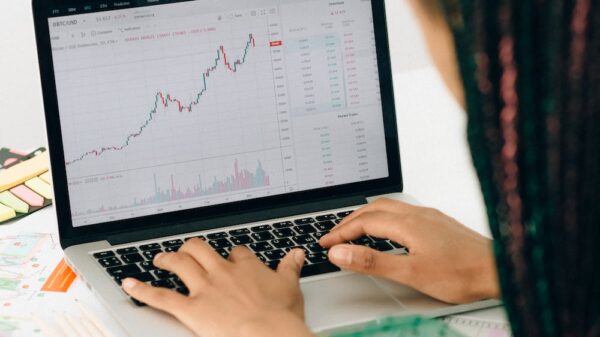In a world where everything is connected, cyber attacks have become the new reality. With data breaches and hacking incidents on the rise, cybersecurity has become one of the most crucial aspects of our daily lives. From businesses to individuals, everyone needs to be aware of the potential risks lurking in cyberspace. In this blog post, we will delve into why online protection is more important than ever and how you can stay safe in an increasingly digital world. So buckle up and get ready for a wild ride through the world of cybersecurity!
Introduction to the Growing Threat of Cybersecurity
In recent years, cybersecurity has become a major concern for businesses and individuals alike. With the increasing reliance on technology and the interconnectedness of our world, the risk of cyberattacks is only growing.
Cybersecurity is the practice of protecting computer systems and networks from unauthorized access or theft. This can include anything from viruses and malware to phishing scams and data breaches. While it is important to protect all types of information, personal data is especially vulnerable to attack.
There are a number of reasons why cybersecurity is more important than ever before. First, the amount of data being stored online is constantly increasing. This includes everything from financial information to medical records to sensitive business documents. Second, our dependence on technology has made us more vulnerable to attacks. We rely on computers for everything from communication to shopping to entertainment, which means that an outage or breach can have a major impact on our lives. Finally, the rise of mobile devices has created new opportunities for attackers. Since these devices are often used for personal and work purposes, they contain a wealth of information that can be accessed remotely.
As the threat of cyberattacks grows, so does the need for strong cybersecurity measures. Businesses must take steps to protect their data, and individuals must be vigilant about safeguarding their personal information. By staying informed and taking precautions, we can help keep ourselves safe in an increasingly digital world
Different Types of Malware and How They Work
There are many different types of malware, each with its own unique method of infecting and wreaking havoc on a system. Some of the most common types of malware include viruses, worms, Trojans, spyware, and adware.
Viruses are perhaps the best-known type of malware. They are programs that replicate themselves and spread from one computer to another. Once a virus has infected a computer, it can damage files, corrupt data, or even delete important information. In some cases, viruses can also allow hackers to gain control of a victim’s computer.
Worms are similar to viruses in that they replicate themselves and spread from one computer to another. However, unlike viruses, worms do not require a host program in order to function. Worms can cause just as much damage as viruses, often flooding networks with traffic and causing system crashes.
Trojans are another type of malware that can be just as dangerous as viruses and worms. Trojans masquerade as legitimate programs or files in order to trick users into executing them. Once executed, however, Trojans can damage files or install other forms of malware on a victim’s computer.
Spyware is yet another type of malicious software that can be installed on a victim’s computer without their knowledge or consent. Spyware gathers information about the victim without their knowledge and sends this information back to the attacker. This information can include everything from
Establishing Secure Online Habits
In the wake of high-profile cyber attacks like the Equifax breach and WannaCry ransomware attack, establishing secure online habits has never been more important. Here are a few tips to help you protect yourself online:
1. Use strong passwords and never reuse them. A strong password is at least 8 characters long and includes a mix of uppercase and lowercase letters, numbers, and special characters.
2. Enable two-factor authentication whenever possible. This adds an extra layer of security to your accounts by requiring you to enter a code from your phone in addition to your password when logging in.
3. Be cautious about what you click on and download. Don’t open emails or attachments from unknown senders, and be careful when downloading files from the internet – only download from trusted sources.
4. Keep your software up to date. Regularly update your operating system and installed programs with the latest security patches to help prevent exploits.
5. Back up your data regularly. This way, if you do become a victim of a ransomware attack, you can restore your data from a backup instead of having to pay the attackers for a decryptor key.
Protecting Yourself from Cyberattacks
As the world increasingly moves online, the threat of cyberattacks grows. That’s why it’s more important than ever to take steps to protect yourself from these attacks.
There are a few key things you can do to help keep yourself safe from cyberattacks:
1. Use strong passwords and never reuse them.
2. Enable two-factor authentication whenever possible.
3. Keep your software up to date.
4. Be cautious about what you click on and download.
5. Back up your data regularly.
By following these simple tips, you can help keep yourself safe from the growing threat of cyberattacks.
Common Cybersecurity Missteps to Avoid
In our increasingly connected world, cybersecurity is more important than ever. As more and more of our lives move online, we are increasingly vulnerable to cyber attacks. Here are some common cybersecurity missteps to avoid:
1. Reusing passwords: Using the same password for multiple accounts is a major security no-no. If a hacker gets access to one of your accounts, they can easily gain access to all of them. Use unique passwords for each account, and make sure to use a mix of letters, numbers, and symbols.
2. Clicking on links in email: Many phishing scams involve emails that look like they’re from a legitimate source, but contain malicious links. Don’t click on any links in emails unless you’re absolutely sure they’re safe.
3. Downloading unknown files: Another common type of attack is malware disguised as a harmless file. Only download files from trusted sources, and be sure to scan them with anti-virus software before opening them.
4. Ignoring security updates: Keeping your software up-to-date is one of the best ways to protect yourself from attack. Security patches are released regularly to address newly discovered vulnerabilities, so make sure you install them as soon as they’re available.
5. Not backing up data: Losing important data can be devastating, so it’s important to have backups in place in case of an attack or other
What Companies Can Do to Strengthen Their Cybersecurity Measures
When it comes to cybersecurity, companies cannot afford to be complacent. In today’s digital age, online threats are constantly evolving and becoming more sophisticated. As such, it is essential for businesses to regularly review and update their cybersecurity measures.
There are a number of steps that companies can take to strengthen their cybersecurity and protect their data from online threats. Firstly, they should ensure that all their employees are trained in basic cyber hygiene and security best practices. Secondly, they should implement robust security measures such as firewalls, intrusion detection/prevention systems, and encryption. Thirdly, they should create comprehensive backup and disaster recovery plans. And fourthly, they should monitor their systems 24/7 for any suspicious activity.
By taking these steps, companies can significantly reduce the risk of falling victim to a cyberattack.
Conclusion
Cybersecurity has become increasingly important in recent years, and it is only going to get more critical as businesses move online. It’s essential that companies of all sizes take the time to understand the threats they face, and make sure they have robust security measures in place to protect their data. The rise of cybersecurity is an ongoing challenge, but with awareness and vigilance we can ensure our digital world remains safe for generations to come.










